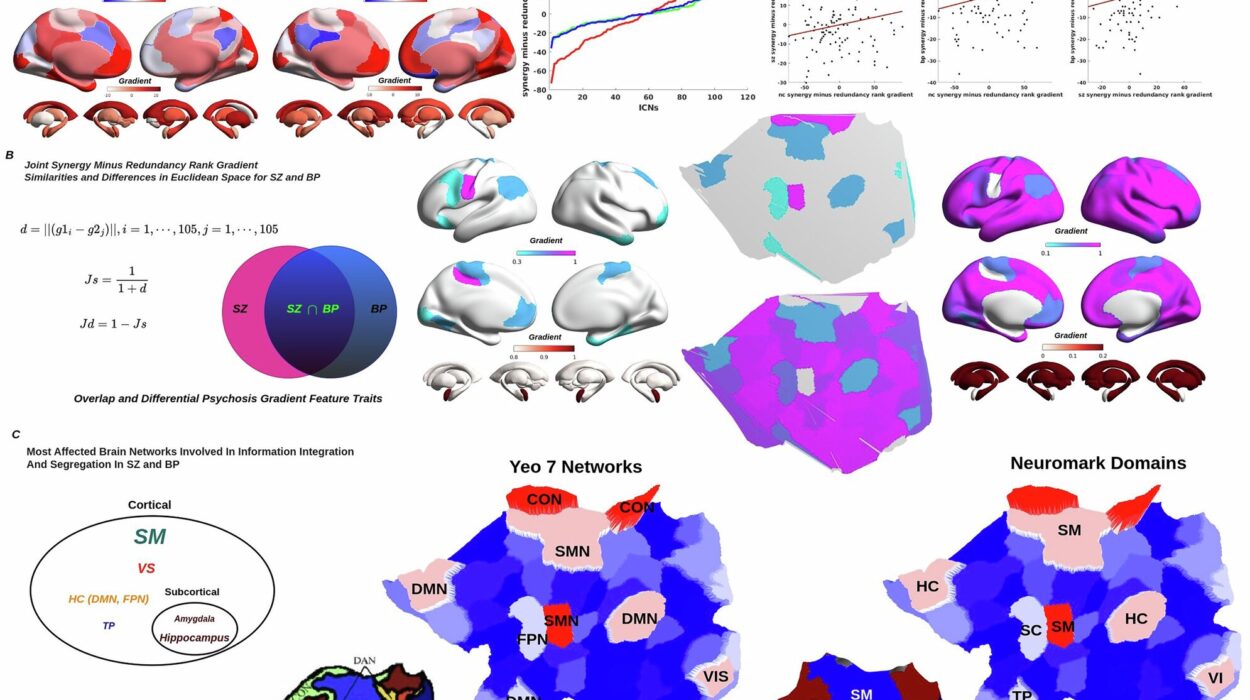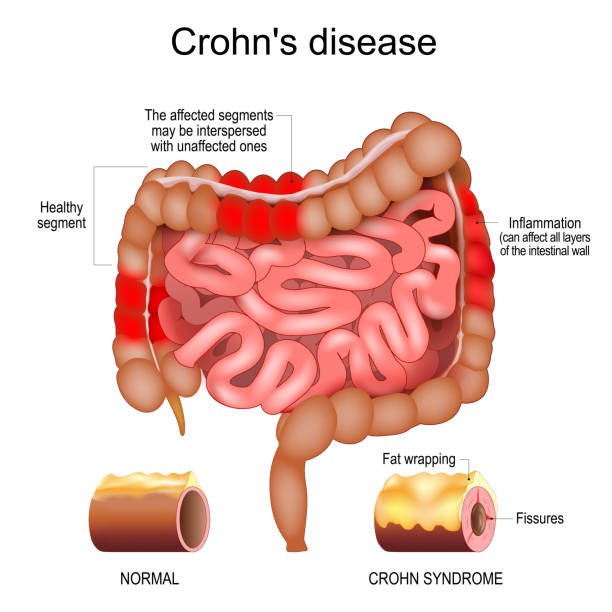In the quiet moments of intimacy, the body may yearn, but the mind often wanders. For women with inattentive symptoms of attention-deficit/hyperactivity disorder (ADHD), that wandering may be more than a fleeting distraction—it could be one reason why orgasm remains elusive during partnered sex. A compelling new study published in The Journal of Sex Research sheds light on this overlooked intersection between neurodiversity and sexual pleasure. It reveals that women with predominantly inattentive ADHD symptoms are significantly less likely to experience consistent orgasms, providing one of the most detailed glimpses yet into how cognitive traits can ripple into the realm of sexual fulfillment.
A Closer Look at ADHD’s Female Face
ADHD is often typecast: a hyperactive schoolboy bouncing off classroom walls, unable to sit still or focus. But that archetype overlooks the many adult women who live with the disorder in subtler, quieter forms—particularly the inattentive subtype. These women may not be impulsive or disruptive, but they wrestle with chronic forgetfulness, difficulty sustaining attention, and mental drift that’s often invisible to others. This internalized version of ADHD, long overshadowed in research, may be precisely why women are so frequently underdiagnosed—or misdiagnosed entirely.
In recent years, scientists have started to recognize the gendered presentation of ADHD. Now, they’re digging deeper into how these differences affect not only academic or work performance but also quality of life and personal relationships. And increasingly, the realm of sexual health—long treated as peripheral or taboo—is finally being explored as a key facet of women’s well-being.
The Orgasm Gap and the ADHD Mind
Even without ADHD, many women face challenges when it comes to reaching orgasm during partnered sex. Reams of research have documented the so-called “orgasm gap,” the statistical disparity showing that men climax far more frequently during heterosexual sex than women. While this gap is often attributed to cultural, anatomical, and communication factors, researchers have also begun examining psychological and cognitive contributors—such as anxiety, body image issues, and the ability to focus during sexual activity.
That’s where ADHD, particularly the inattentive type, enters the conversation. Attention is a finite resource, and during sex, it can be the difference between being present in one’s body and being lost in thought. Cognitive distraction—whether it’s intrusive thoughts, mental multitasking, or zoning out—has long been identified as a barrier to orgasm. For women with ADHD, especially those who experience frequent attentional lapses, the challenge may be amplified.
The Study: Mapping Pleasure and Neurodiversity
To explore this idea, researchers led by Tina Jensen-Fogt of Kwantlen Polytechnic University conducted a large-scale online survey of 815 cisgender women aged 18 to 84. All participants had been sexually active with at least one partner in the previous six months, and crucially, a clinical ADHD diagnosis was not required. Instead, participants completed a validated self-report ADHD scale, which allowed the researchers to categorize them based on symptom patterns—predominantly inattentive, hyperactive-impulsive, combined, or none.
Participants also completed a series of standardized questionnaires assessing orgasmic consistency (how often they reached orgasm during partnered sex), sexual assertiveness (the ability to advocate for one’s own pleasure), and general sexual attitudes. This comprehensive approach allowed researchers to tease apart the nuances of how attentional traits correlate with sexual experiences while accounting for other variables that influence sexual satisfaction.
A Pattern Emerges: Inattention and Inconsistency
The findings were striking. Women with predominantly inattentive ADHD symptoms reported the lowest levels of orgasmic consistency—lower than women with other ADHD subtypes and lower than women without ADHD symptoms. This wasn’t a trivial difference; it marked a significant departure in how these women experienced sexual pleasure. The hallmark traits of inattentive ADHD—frequent daydreaming, difficulty sustaining focus, and mental drift—appear to play a tangible role in disrupting sexual flow and climax.
As Jensen-Fogt explained, “Women who experience predominantly inattentive symptoms of ADHD experienced lower rates of orgasmic consistency compared to controls and women who experienced predominantly hyperactive-impulsive or combined subtype symptoms. This puts them at greater risk for the negative outcomes associated with difficulties in achieving orgasm, such as reduced sexual satisfaction, relationship satisfaction, and self-esteem, as well as increased rates of emotional distress.”
The pattern was not universal, however. Interestingly, women who exhibited predominantly hyperactive-impulsive symptoms reported higher orgasmic consistency than both their inattentive counterparts and even those without any ADHD symptoms. This counterintuitive result suggests that certain ADHD traits—such as heightened physical energy or emotional intensity—may actually enhance arousal and orgasmic potential in some contexts.
The Possible Role of ADHD Medication
Another intriguing dimension of the study was the role of medication. Women who reported taking ADHD medications, even if they no longer met diagnostic thresholds for symptoms, experienced more consistent orgasms than women without ADHD symptoms who were not on medication. While the study did not track specific medications or dosages, this correlation raises the possibility that symptom management—especially improved attentional control—may play a direct role in enhancing sexual function.
Still, researchers urge caution in interpreting this finding. “The types of medications participants used were not recorded,” Jensen-Fogt noted. “So while there may be some indication that medication for ADHD symptom management potentially ameliorates orgasmic difficulties, much further research is needed to examine the effects of specific types of medications.”
Sexual Orientation and the Landscape of Pleasure
Sexual identity also played a noteworthy role in orgasmic consistency—but only among women without ADHD symptoms. Sexual minority women, including those who identified as lesbian, bisexual, or pansexual, reported higher orgasmic consistency than their heterosexual counterparts. This trend echoes findings from other studies that suggest non-heterosexual women may experience more varied and communicative sexual dynamics, which could contribute to higher levels of satisfaction and climax.
Interestingly, this difference vanished among women with ADHD symptoms. The presence of ADHD appeared to neutralize any advantage conferred by sexual orientation. This suggests that neurodiversity may be a more dominant factor than sexual identity in shaping orgasmic experiences for these women.
Beyond the Bedroom: Why This Research Matters
The study’s authors emphasize that their work isn’t just about pleasure—it’s about health, equality, and validation. Sexual well-being is a critical component of quality of life, yet it is often ignored in both clinical and cultural conversations about ADHD, especially in women. By bringing attention to how neurodevelopmental traits intersect with intimate experiences, this research helps break long-standing silences.
“Discovering that the research on sexual pleasure for women with ADHD is very limited, we were inspired to expand on this topic to better understand how ADHD symptoms may affect women’s sexual experiences during partnered sex,” said Jensen-Fogt. “Our hope is to better support women in living sexually healthy and fulfilling lives.”
Importantly, the study was preregistered—a key strength that boosts the credibility of its findings. Preregistration involves publicly committing to an analysis plan before collecting data, reducing the risk of cherry-picking results or post-hoc storytelling. The large and diverse sample, spanning ages, ethnicities, and sexual identities, also enhances the study’s generalizability.
Still, the researchers acknowledge the study’s limitations. It relied on self-reported symptoms rather than clinical diagnoses, excluded solo sexual activity, and did not capture detailed medication histories. The data also reflect correlation, not causation. Further studies—ideally with physiological measures and longitudinal designs—are needed to deepen these insights.
The Mind in the Moment
If there’s a single message that resonates from this research, it’s that focus—the ability to be mentally present—is a crucial ingredient in sexual pleasure. And for women with inattentive ADHD, that presence is often harder to access. Their minds may flit from memory to worry, from the ceiling fan to tomorrow’s to-do list, all while their bodies try to stay in tune with sensation.
Yet this is not a call for pessimism. On the contrary, the study suggests that with awareness, support, and possibly medical treatment, these challenges can be addressed. It invites a more compassionate view of women’s sexual difficulties—one that recognizes cognitive barriers not as personal failings, but as legitimate neurological patterns deserving of understanding and accommodation.
Toward a More Inclusive Science of Sexuality
This study opens important doors: into the bedrooms of women with ADHD, into their minds during moments of intimacy, and into broader conversations about how we define, support, and celebrate female sexuality. It is part of a growing movement that seeks not only to close the orgasm gap, but to reimagine sexual health as a deeply human experience—one that includes, rather than marginalizes, neurodiverse individuals.
As research continues, Jensen-Fogt and her colleagues hope to expand their focus to include other domains of sexual functioning, such as desire, arousal, and satisfaction, across different ADHD subtypes. Their long-term goal is clear: to create interventions, resources, and educational tools that empower women with ADHD to embrace their bodies, communicate their needs, and experience sexual joy without shame or struggle.
Because in the end, pleasure is not just a luxury—it’s part of the human right to feel whole.






